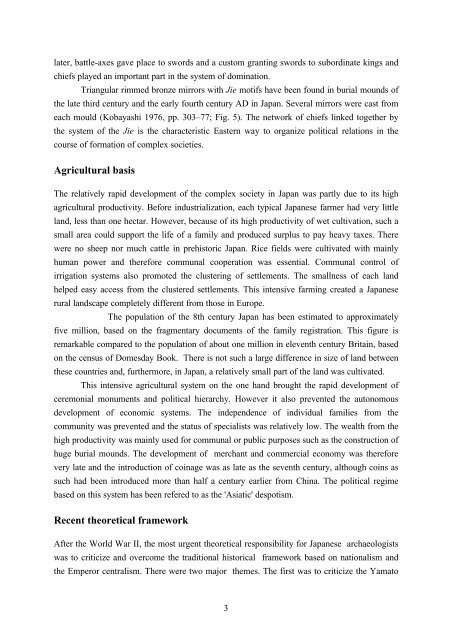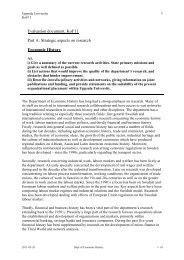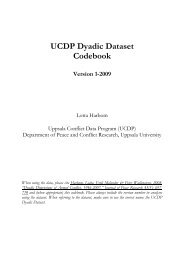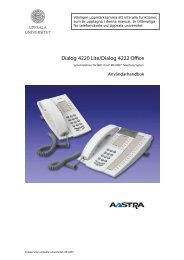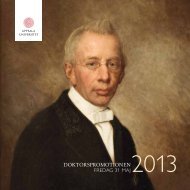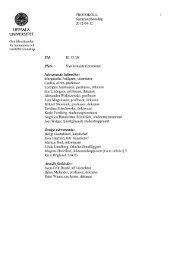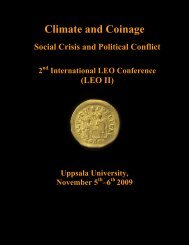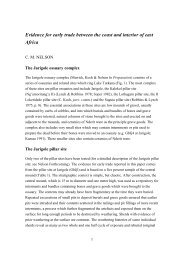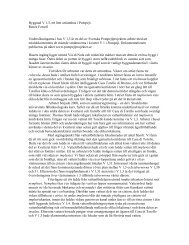The formation of a complex society in Japan.
The formation of a complex society in Japan.
The formation of a complex society in Japan.
Create successful ePaper yourself
Turn your PDF publications into a flip-book with our unique Google optimized e-Paper software.
later, battle-axes gave place to swords and a custom grant<strong>in</strong>g swords to subord<strong>in</strong>ate k<strong>in</strong>gs andchiefs played an important part <strong>in</strong> the system <strong>of</strong> dom<strong>in</strong>ation.Triangular rimmed bronze mirrors with Jie motifs have been found <strong>in</strong> burial mounds <strong>of</strong>the late third century and the early fourth century AD <strong>in</strong> <strong>Japan</strong>. Several mirrors were cast fromeach mould (Kobayashi 1976, pp. 303–77; Fig. 5). <strong>The</strong> network <strong>of</strong> chiefs l<strong>in</strong>ked together bythe system <strong>of</strong> the Jie is the characteristic Eastern way to organize political relations <strong>in</strong> thecourse <strong>of</strong> <strong>formation</strong> <strong>of</strong> <strong>complex</strong> societies.Agricultural basis<strong>The</strong> relatively rapid development <strong>of</strong> the <strong>complex</strong> <strong>society</strong> <strong>in</strong> <strong>Japan</strong> was partly due to its highagricultural productivity. Before <strong>in</strong>dustrialization, each typical <strong>Japan</strong>ese farmer had very littleland, less than one hectar. However, because <strong>of</strong> its high productivity <strong>of</strong> wet cultivation, such asmall area could support the life <strong>of</strong> a family and produced surplus to pay heavy taxes. <strong>The</strong>rewere no sheep nor much cattle <strong>in</strong> prehistoric <strong>Japan</strong>. Rice fields were cultivated with ma<strong>in</strong>lyhuman power and therefore communal cooperation was essential. Communal control <strong>of</strong>irrigation systems also promoted the cluster<strong>in</strong>g <strong>of</strong> settlements. <strong>The</strong> smallness <strong>of</strong> each landhelped easy access from the clustered settlements. This <strong>in</strong>tensive farm<strong>in</strong>g created a <strong>Japan</strong>eserural landscape completely different from those <strong>in</strong> Europe.<strong>The</strong> population <strong>of</strong> the 8th century <strong>Japan</strong> has been estimated to approximatelyfive million, based on the fragmentary documents <strong>of</strong> the family registration. This figure isremarkable compared to the population <strong>of</strong> about one million <strong>in</strong> eleventh century Brita<strong>in</strong>, basedon the census <strong>of</strong> Domesday Book. <strong>The</strong>re is not such a large difference <strong>in</strong> size <strong>of</strong> land betweenthese countries and, furthermore, <strong>in</strong> <strong>Japan</strong>, a relatively small part <strong>of</strong> the land was cultivated.This <strong>in</strong>tensive agricultural system on the one hand brought the rapid development <strong>of</strong>ceremonial monuments and political hierarchy. However it also prevented the autonomousdevelopment <strong>of</strong> economic systems. <strong>The</strong> <strong>in</strong>dependence <strong>of</strong> <strong>in</strong>dividual families from thecommunity was prevented and the status <strong>of</strong> specialists was relatively low. <strong>The</strong> wealth from thehigh productivity was ma<strong>in</strong>ly used for communal or public purposes such as the construction <strong>of</strong>huge burial mounds. <strong>The</strong> development <strong>of</strong> merchant and commercial economy was thereforevery late and the <strong>in</strong>troduction <strong>of</strong> co<strong>in</strong>age was as late as the seventh century, although co<strong>in</strong>s assuch had been <strong>in</strong>troduced more than half a century earlier from Ch<strong>in</strong>a. <strong>The</strong> political regimebased on this system has been refered to as the 'Asiatic' despotism.Recent theoretical frameworkAfter the World War II, the most urgent theoretical responsibility for <strong>Japan</strong>ese archaeologistswas to criticize and overcome the traditional historical framework based on nationalism andthe Emperor centralism. <strong>The</strong>re were two major themes. <strong>The</strong> first was to criticize the Yamato3


